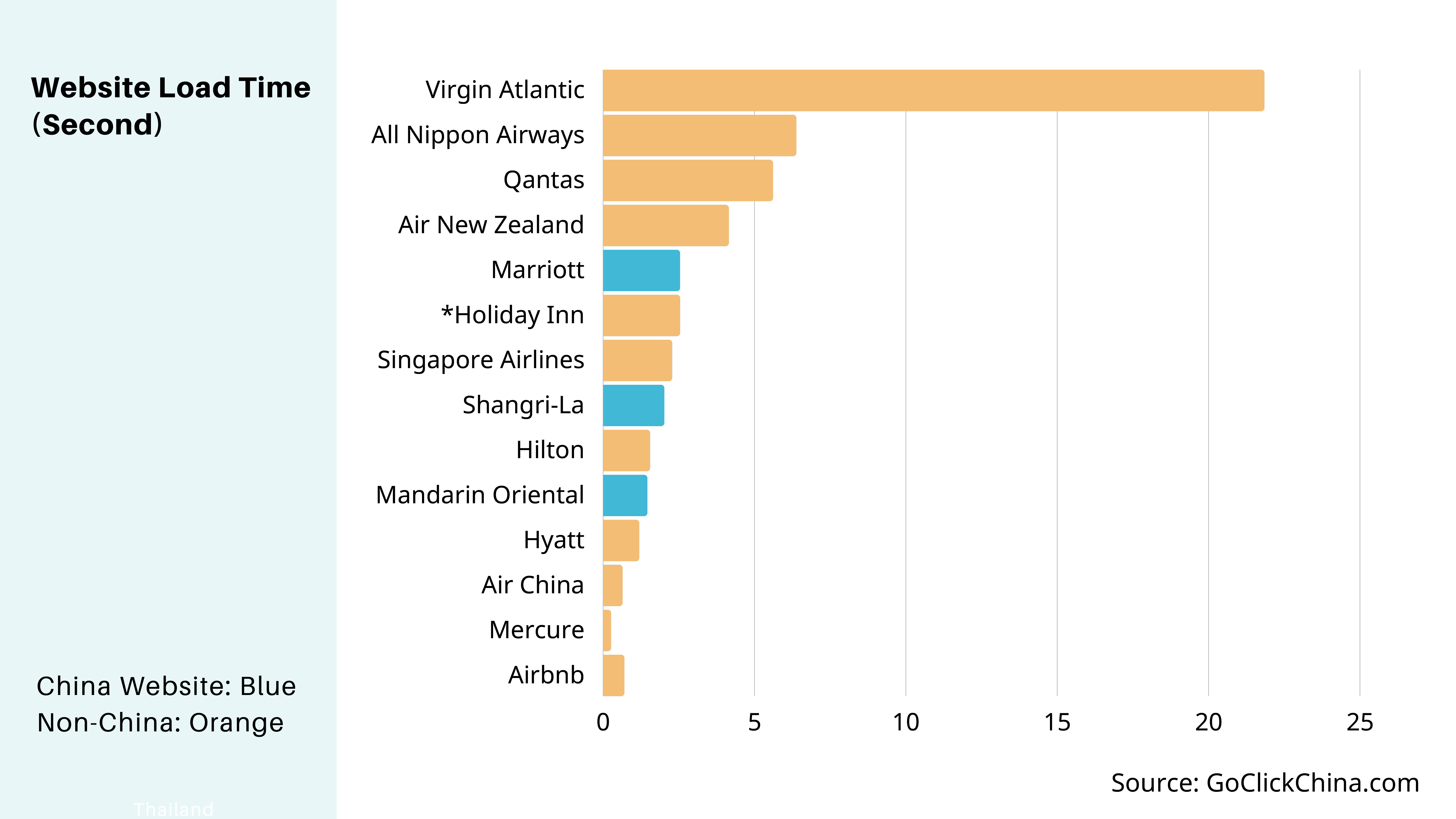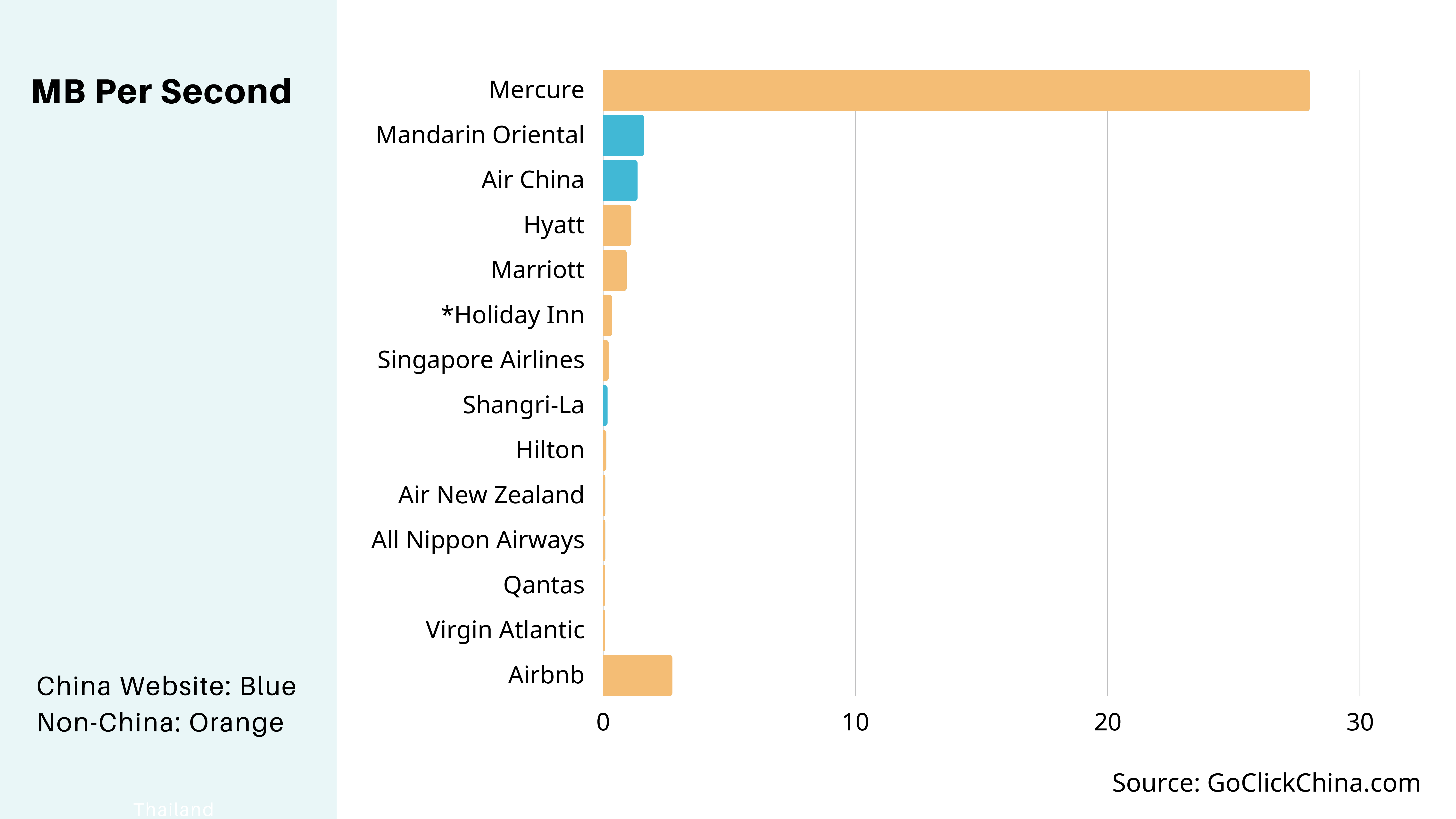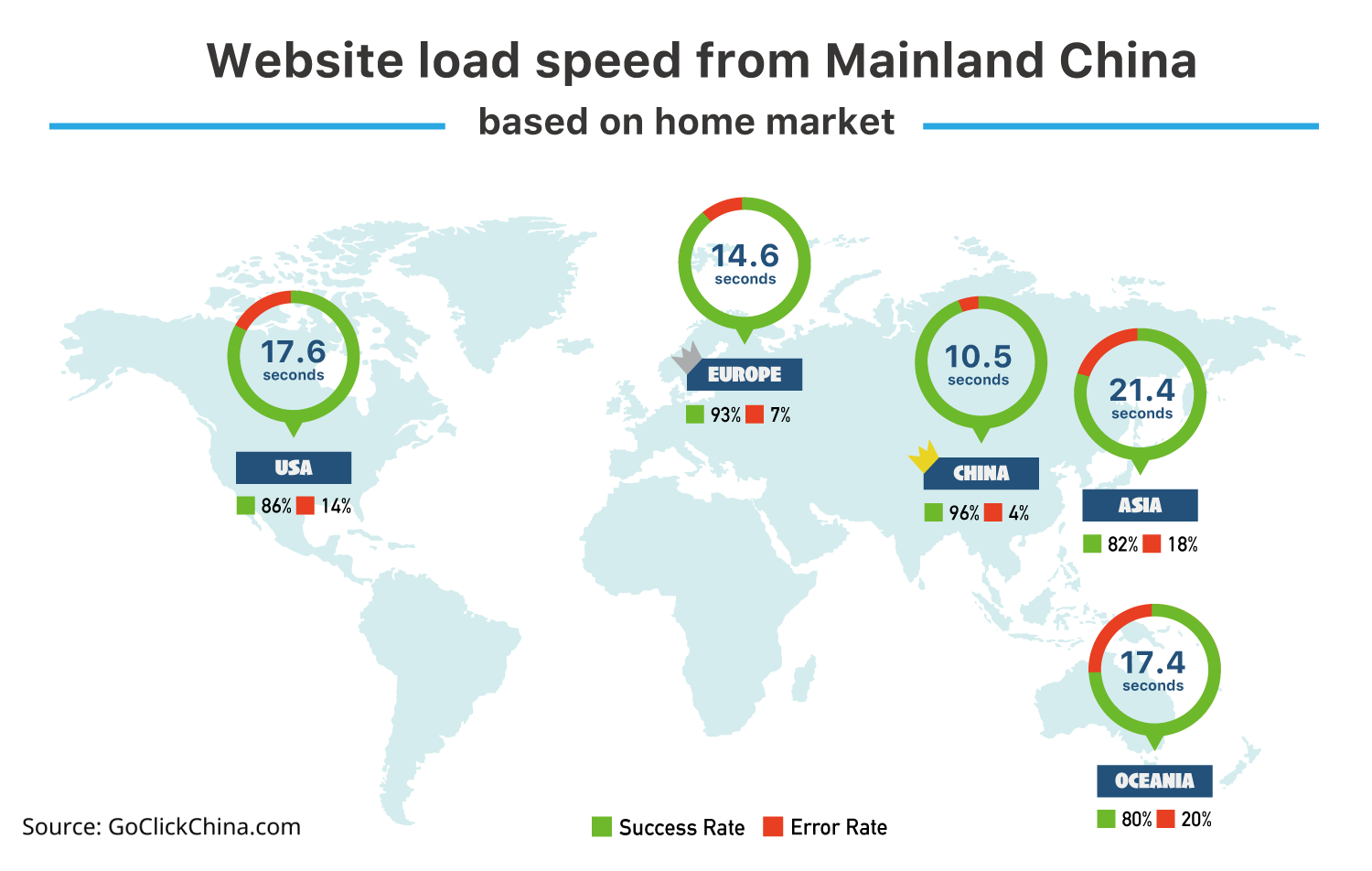We tested the site speed of accommodation and airline booking sites operating in and outside of China. The country's heavily regulated internet environment affects the performance of overseas websites operating within their borders. From our list of the best and worst travel websites for page speed, you'll learn which brand came out on top and which factors play a role in performance.
As China continues to recover from the pandemic, travelers are itching to book their next holiday overseas. However, factors like geographic location, blocked site features, and overall China network surveillance can slow down the web performance of an international website.
If overseas travel platforms like Holiday Inn or Qantas don't load fast enough within China, impatient customers may opt to book with another brand. Of the 14 brands we tested, our research team took a deeper look at which technical factors had the most impact on speed and whether geography influences results.
Speed matters
We compared the performance of 14 foreign businesses from outside of China to the local ones in China. By collecting and comparing this data, we can predict whether a foreign website can perform well in the Chinese market.

Based on the results we gathered, many of these foreign websites' loading times took too long compared to websites based in China or foreign websites with local CDN (Content Delivery Network).
Slower than average loading times are bound to negatively impact business opportunities as most users may leave before the page is loaded. A website's loading time is usually affected by its design and local CDN optimization. If local China protocols are followed, file access can be accelerated.
Our results showed that Mercure, Air China, and Airbnb all exhibited loading speeds around 50% faster than the other websites. We saw that they had optimized the resolution of their web pages to provide a comfortable user experience. This factor could also contribute to site readability.
Overseas websites such as Air Nippon Airways and Holiday Inn use too many website requests. We recommend that the number of requests should be kept at a minimum (<100) to reduce loading failure and management problems.
Qantas and Air New Zealand have a reasonable number of requests (≈ 2000). However, the request loading rate of these four websites is only 80%, which means that every fifth resource transmitted on the website will have a possibility of failure. This is a very serious problem. It is recommended that these websites be optimized and improved to work with China's network.
A web request alone isn’t enough to assess performance

A request, or in this case a web request, is a site protocol wherein a user's request to access a site gets transmitted to the relevant server where the site's files are stored. The entire process of transmittal, retrieval, and subsequent delivery to the user via a successfully loaded web page summarizes how a request process occurs. If the page requested loads fully, then the request is successful.
Despite all these, a request alone isn't enough of an indicator to assess overall website performance. Although web requests affect website management and may impact a website's performance, if there are too many, overall web design is still the best, a more holistic indicator of website performance.
A site that receives too many web requests might slow down the user experience. Having too many requests may mean that there are a lot of files being transferred. In the chart above, a good benchmark for requests is Air China since it is located within China. An aviation business that intends to penetrate China should fix their website assets if they log more requests than Air China's.
In the chart, Air China can be seen as an example of how web requests can impact website performance. Air China logged 105 requests, a relatively high number, but still managed to deliver quick loading speeds compared to the requests and loading speeds shown by Air New Zealand.
Why request success rates are a better performance indicator

Rather than focusing on request numbers alone, our results indicate that request success rates are a better indicator for analyzing website performance. Success rates are more reliable sources to draw insights from.
The request success rate shows how many successful requests were delivered to the user. The higher the request success rate is, the better the website performance is too. Meanwhile, high failure rates indicate that certain website functions are not working or elements may be missing.
For example, in the chart, you can see that despite Singapore Airlines logging 200+ requests in total, their success rate is only at 84%. Compare that to Airbnb's 200+ requests as well but coupled with a 99% success rate. Though both websites had almost the same number of requests, Airbnb had a better request success rate. We can look much deeper into each website's design to figure out where the discrepancies lie from this data point.
Looking at Transferred Files

Another critical data point to look at is the transferred files. These files have a significant impact on user experience because it affects page loading times. It may also affect the outcome of a web page, whether it will completely load or end up showing an error. These files indicate the amount of data being transferred, contributing to a website's request success rate.
In the first chart, you can see that despite Mercure logging the largest file size at more than 8 MB, it also delivered the fastest transfers at 4 MB per second (shown in the second chart). In comparison, Hilton logged big file size transfers with low MB transferred files per second. One reason for this, which our team found out during this study, is that Mercure likely uses a China CDN service.
Note: Mb per second = Transferred Mb / Load time (in seconds)

Location matters
Aside from the technical aspects that affect a website's performance, we also tested how physical location impacts speed and request success rate. Due to regulations posed by China's internet authorities, some businesses decide to host their site offshore.
In the map below, we tested how websites performed in China based on their location. We compared sites based in regions and outside of China: USA, Europe, Asia, and Oceania:

- The seconds indicate how long it takes for the site to load on a user's computer in China.
- The request success rate is indicated in green as a percentage, while the error counterpart is marked in red to show that the page's requests did not load. Errors indicate incomplete loading of the website, such as missing images, fonts, or video. The high success rate means more stable service quality.
- We learned that, on average, web services within China performed comparatively better than ones outside of China, followed by web services in European countries.
- Note: Airbnb is not covered in this diagram. Its web services are located in USA.
To be as fast as a local site, use the right tools
As seen throughout the charts and insights, our study shows a snapshot of how hospitality and aviation businesses perform online in China.
From our sample, we’ve seen that most foreign websites in China do not perform as well as those that are in China, with the exception of Airbnb.
There is a need to improve the foreign websites’ overall performance since they do not meet the same performance of hospitality and aviation businesses operating within China. As an international website hosted outside of China, Airbnb can be used as a benchmark since it found a way to maximize its web assets to tap the China market while fully operating online successfully.
Recommendations
- Utilize services from local CDN providers, meaning those who are operating right from China.
- Do a comprehensive test on your website's design, check what improvements can made while noting how page loading affects the overall look of the website once it's complete.
- Partner with a local website testing team in China to perform both manual and synthetic testing on a website. This way, other technical variables can be tracked in a regular manner within the context of China.
For questions and further details about this study, you may get in touch with GoClick China.
Check out GoClick China’s services.
